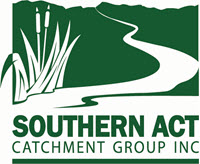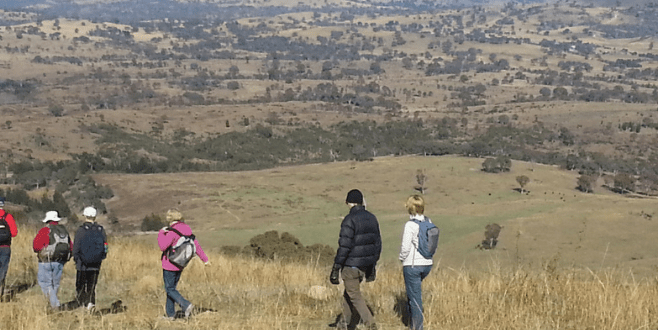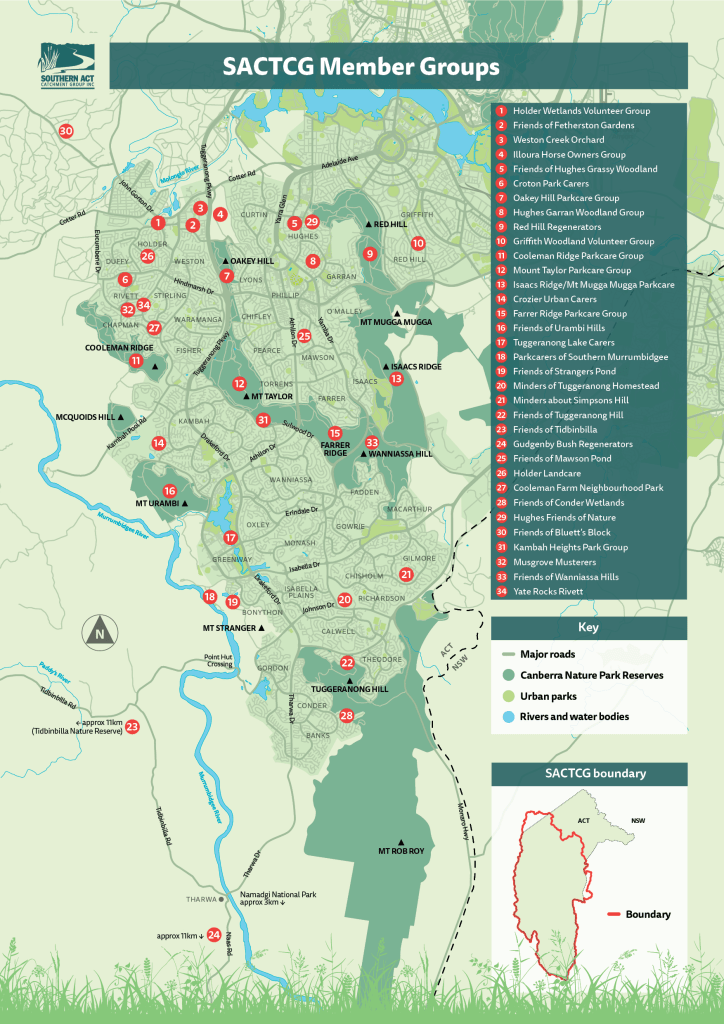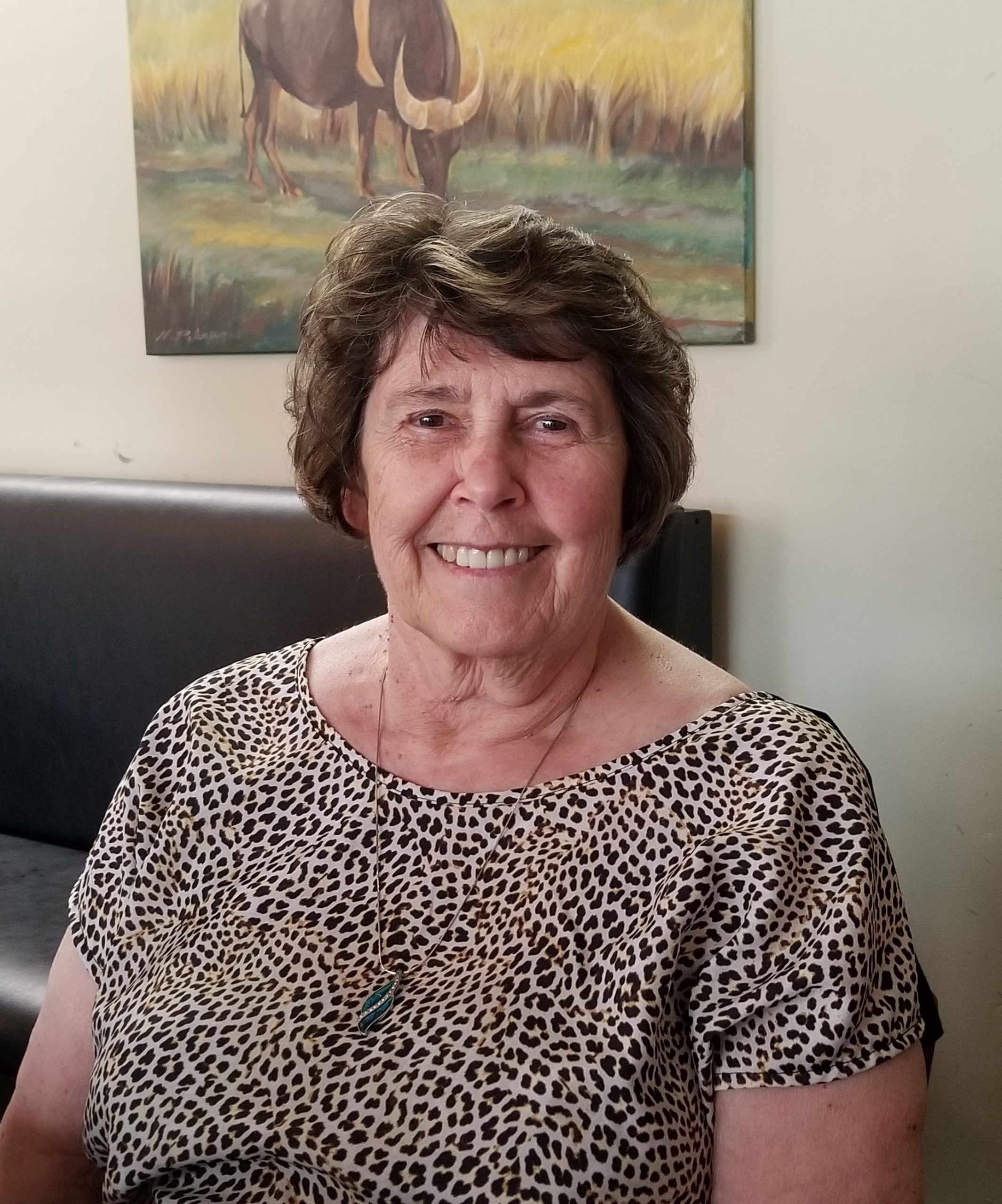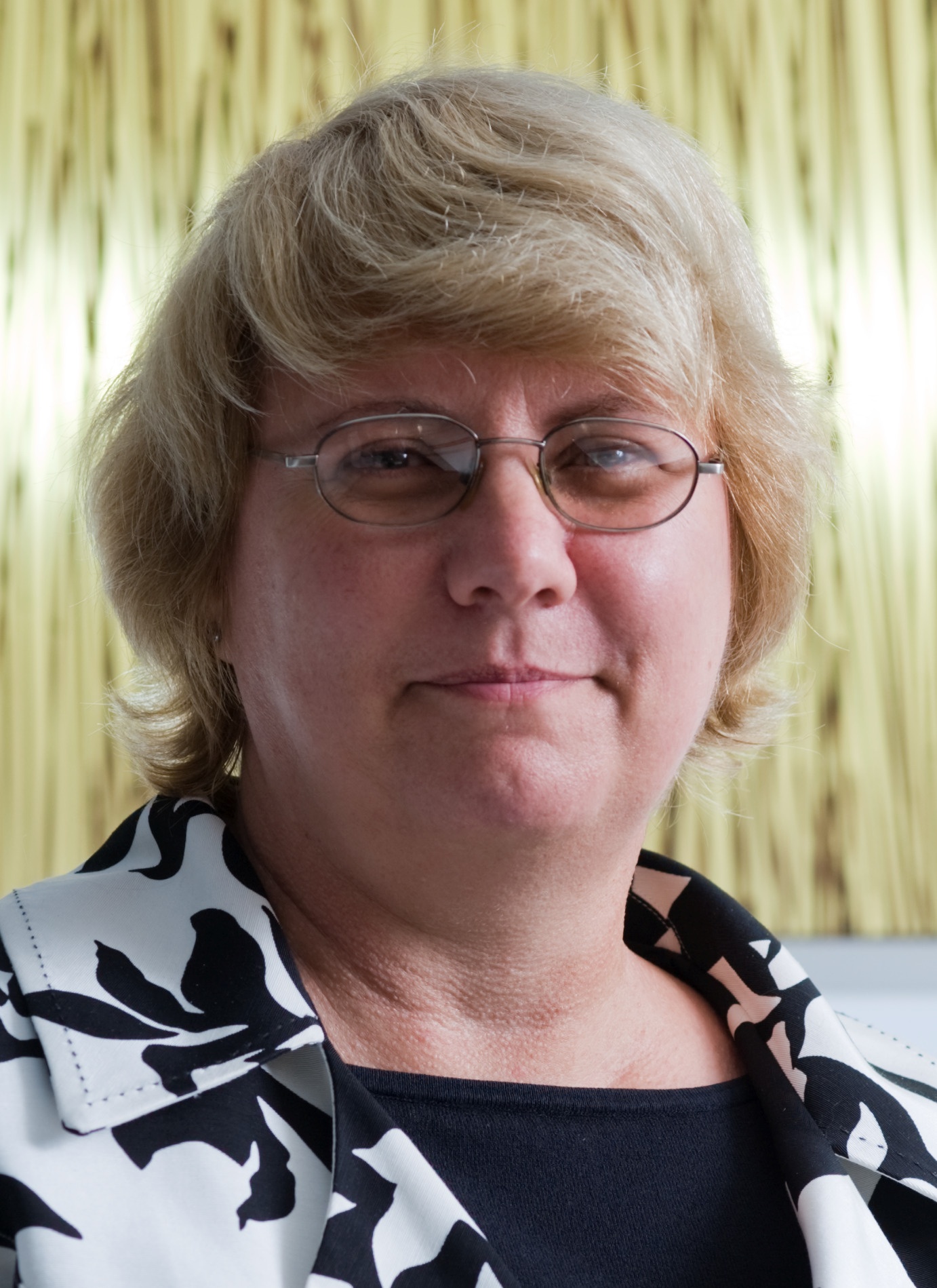- Who We Are
- Our Catchment
- Our Committee
- Our Staff
- Strategic Plan
- Value Proposition
- Constitution
- Privacy Policy
About Us
The Southern ACT Catchment Group (SACTCG) is a non-government, not-for-profit group formed in May 2002 to represent all active environmental groups in the southern areas of the ACT.
SACTCG is one of three community based catchment groups in the ACT and covers the areas of Woden, Weston Creek, Tuggeranong and Tharwa. SACTCG provides a network for our member groups, helping in their development and operation, providing assistance with project ideas, funding opportunities and providing a community forum for ideas and discussion. Our member groups originated from the ranks of Parkcare, Urban and Rural Landcare, Waterwatch and other community groups interested in the environment. As a group, we are also involved in ‘sub-catchment planning’ that will enable us to address priority issues in a strategic fashion well into the future. Some examples of issues being addressed by the SACTCG include community building, biodiversity, riparian plantings, weed management, soil health, water quality, European and Indigenous cultural heritage, vegetation loss and urban land degradation.
How are we funded?
SACTCG relies on grants and partnerships to undertake all aspects of our work. The ACT Government is currently our major funding partner and this enables us to implement various projects including community education activities, development of community stewardship on public land, capacity building and on-ground works. We also receive substantive funding to implement the Southern ACT Waterwatch Program. SACTCG receives multiple local and Commonwealth 1-2 year competitive grants from a wide range funding partners across different sectors to support its strategic direction and its local catchment community.
SACTCG also accepts donations from the community into the Southern ACT Catchment Environment Fund.
SACTCG Membership
The Southern ACT Catchment Group encourages individuals and groups who are concerned about the health of our environment to join our membership network. Membership to SACTCG is all about building social capital – people from the community getting together and working together to achieve something they believe in. The catchment group takes a leading role in opening communication channels between the community and government, ensuring the concerns of our members are heard.
As a member of SACTCG you are entitled to access a range of funds for community projects. SACTCG can assist you in the development of your projects including the administration of your grant, including handling of funds, paperwork and insurance matters and we also sponsor applications for funding.
Join our membership network
Volunteers
Our member groups are made up of local volunteers who join in with landcare activities. If you’re interested in volunteering with your local group, we can put you in touch.
Sign-up to volunteer with your local group.
Committee
The SACTCG Committee meets monthly on the last Tuesday of the month. All members and those interested in being involved in the Committee are warmly welcome. Please contact info@sactcg.org.au if you would like to attend.
Partnerships
Since 2002 SACTCG has formed many strong and enduring partnerships in our region. These are other environmental organisations, the ACT Government, schools and businesses and include:
- ACT Government
- ACT Rural Landholders Association
- ACT Wildlife
- Canberra Environment and Sustainability Resource Centre
- Caroline Chisholm High
- CIT
- Erindale College
- Friends of Grasslands (FoG)
- Ginninderra Catchment Group
- Greening Australia Capital Region
- Icon WATER
- Lake Tuggeranong College
- Lions Youth Haven
- Molonglo Conservation
- Outward Bound
- The Conservation Council
- Tuggeranong Community Council
- Upper Murrumbidgee Catchment Network
Our Catchment
A catchment area is generally defined through the physical geography of an area of land generally bounded by natural features that all drain to a common point
such as a river or into a specific body of water. In human geography however, a catchment area is defined as the area that services or attracts the surrounding population, for example a local nature reserve has a geographic area from which the community is able to benefit from the natural resources through physical, social or mental wellbeing. This area is not limited to the reserve itself but also the surrounding neighbourhoods that may benefit from linkages with the reserve.
In our case the southern ACT catchment area has been redefined to enable community participation in the management of this part of the Upper Murrumbidgee River Catchment. Our catchment boundaries are based upon the sub-catchments outlined in the ACT Government’s water resources strategy, Think Water Act Water – a strategy for sustainable water resource management, and includes the original catchments outlined in the Woden-Western, Tuggeranong-Tharwa and South-West ACT sub-catchment plans.
The map below outlines the southern ACT catchment area and its 14 sub-catchments. It is important to note that in several areas the SACTCG has redefined the watershed catchments to include the social catchment. This was done to provide a more effective administration of the catchment area for both physical and human geographic needs.
The southern ACT catchment consists mainly of rolling grasslands and is bounded to the west by the Australian Alps, with the peaks of Mt Bimberi, Mt Ginini, Mt Franklin and Mt Aggie forming the western border. To the south-west the catchment joins Kosciuszko National Park and the Bimberi and Scabby Range Nature Reserves with Brindabella National Park on the north-western border.
Mt Clear borders the southern most area of the catchment.
The Murrumbidgee escarpment cuts across the catchment from south-east to north-west with the rural and urban areas to the east and two belts of mountainous terrain separated by the Cotter River valley to the west.
Land use categories in the southern ACT catchment area have been divided into the following three areas: conservation areas, rural lands and urban development. Conservation areas refer to landscapes that hold both natural and cultural values such as Canberra’s National Parks and Reserves and Heritage sites. Rural lands are defined as any land or property that is used for agriculture, including rural leases. Plantation pine forests were a significant land use within the southern ACT catchment area until the aftermath of the 2003 bushfires. The ACT Government has agreed that there will be no more commercial or broad-acre pines in the catchment. The 1,285 ha of existing pine plantations will be managed on a non-commercial basis and liquidated when it is feasible to convert the area to a primarily, native vegetation cover. Water catchment will be the primary land use for the Cotter catchment. Urban development includes the residential area, services centres, industry and supporting infrastructure.
Conservation Areas
Namadgi National Park covers 105,900 ha, making up more than half of the ACT. Declared as a National Park in 1984 it is now a sanctuary protecting all animals, plants and cultural sites within its’ borders. To the south-east the park joins Kosciusko National Park and the Bimberi and Scabby Range Nature Reserves and on the north-east boarder joins Brindabella National Park. The park has a wide variety of conservation habitats that range from the broad grassy valleys to snow gum woodlands and subalpine wetlands and is zoned to accommodate recreational opportunities such as camping, recreational driving, cycling, horse riding, bushwalking, rock climbing and abseiling.
Tidbinbilla Nature Reserve is 5,450 hectares on the border of Namadgi National Park. The reserve consists of the valley floor where most of the recreational opportuinities for visitors are located, and the protected areas of the Gibraltar Rangers and Tidbinbilla Mountain. Tidbilnbilla is home to the Birrigai Rock Shelter, the oldest Aboriginal site within the ACT.
Murrumbidgee River Corridor From Angle Crossing in the south to Uriarra Crossing in the north, around 66 km of the Murrumbidgee River and a narrow strip of land either side of it has been identified as a single entity, the Murrumbidgee River Corridor (MRC). The MRC is a collection of nature reserves, recreation reserves, a European heritage conservation zone and rural leases. The Murrumbidgee is home to the Murray Crayfish which is now protected due to dwindling numbers from over fishing.
Canberra Nature Park Reserves range from bushland hills to some of the best examples of lowland native grassland in south-east Australia. The reserves contain some of the best examples of Yellow Box-Red Gum Grassy Woodland left in Australia. This type of woodland is an endangered ecological community. It is home to a number of rare or threatened species such as the Hooded Robin, Striped Legless Lizard and the Button Wrinklewort.
Committee
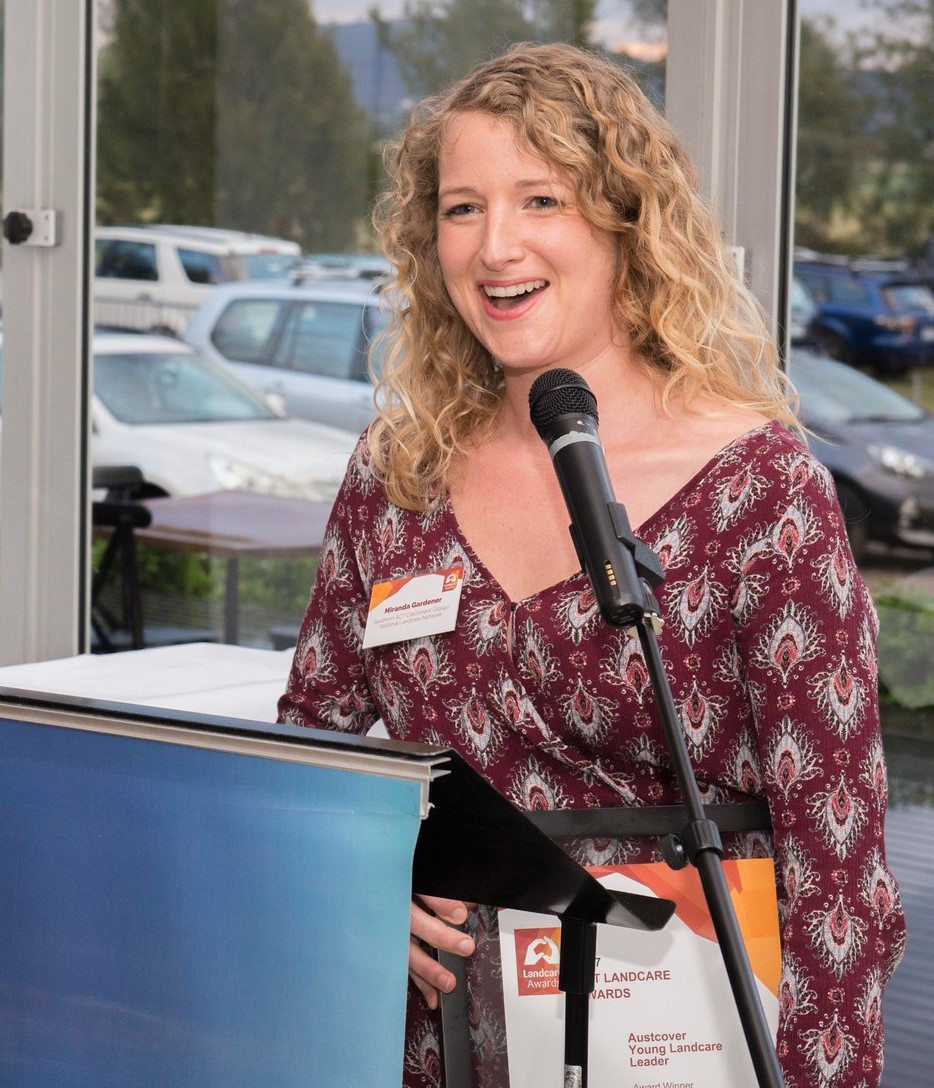
CHAIR AND SECRETARY | Miranda Gardner
Miranda specialises in engagement, behavioural education and stakeholder relations in relation to protection and management of the environment.
She has worked for conservation NGOs, corporations and government in roles with an emphasis on citizen science and sustainable land management.
Glenys is passionate about the environment and bringing the community together. Glenys has had a long engagement in environment issues in her local area, including as founding member and long-standing Chair of the Southern ACT Catchment Group. Over more than ten years, Glenys supported and helped Landcare and Waterwatch groups in her region, and in 2011 she established the Tuggeranong Lake Carers, which she coordinates to this day. A member of Murrumbidgee Landcare Inc, Glenys is also a current Board Member of LandcareACT, the peak body for Landcare in the ACT. For many years, she has represented the ACT at the National Landcare Network (NLN).
Kerry has had a life-time commitment to the good stewardship of Australia’s land and waters. She has had extensive experience in federal government water and environment policies and programs, is a rural lessee, a member of the Australian Institute of Company Directors, and a Board Member of Landcare ACT.. She believes in the importance of supporting land managers and local communities to engage in the rehabilitation, protection and climate adaptation of the ACT’s landscapes.
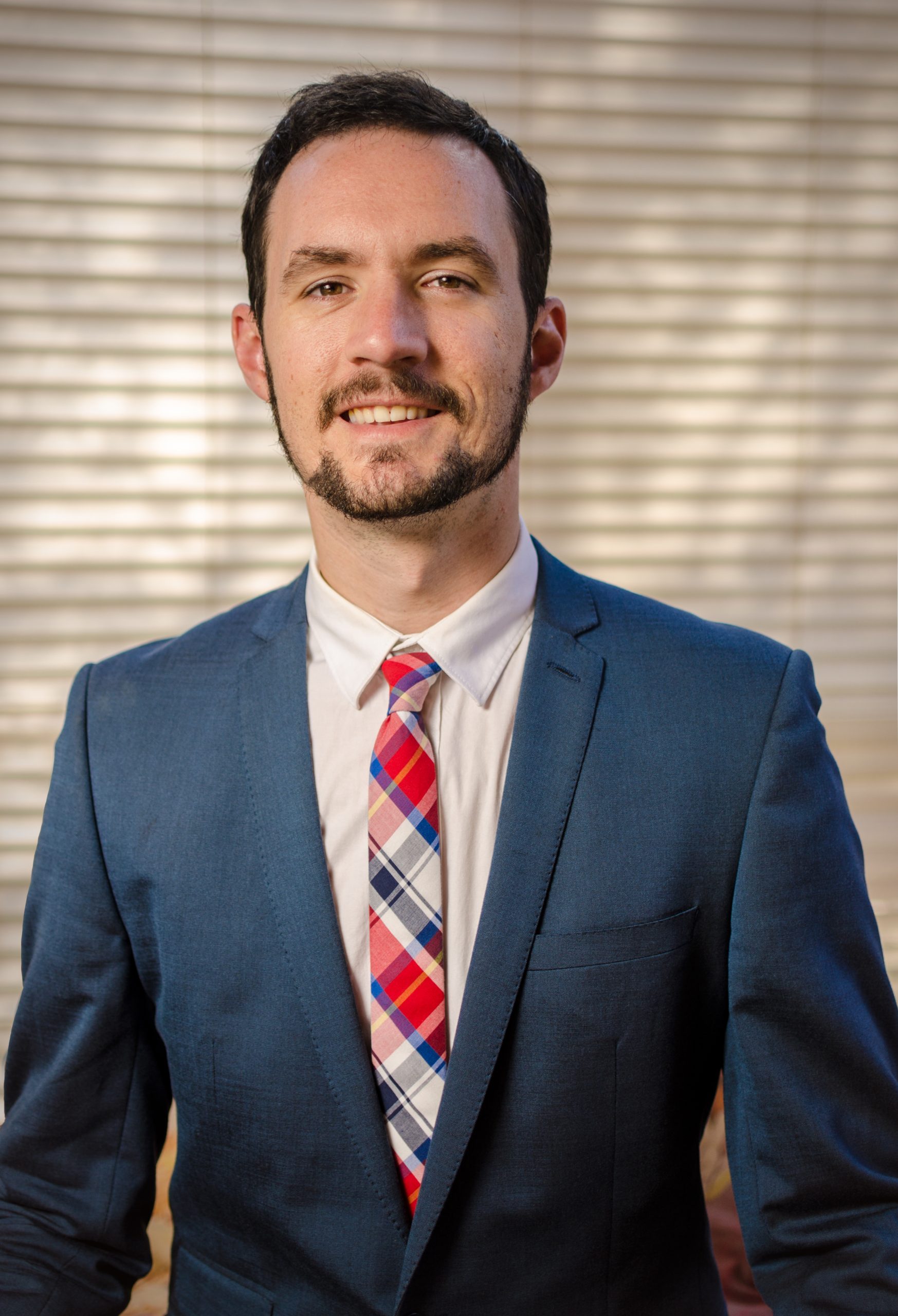
GENERAL COMMITTEE | Philip Prentice
Philip believes that when is comes to water management and balancing people’s needs with the environment we can do a lot better. To this end he has spent his career as an environmental engineer contributing to water cycle projects . Philip is committed to volunteering with community organisations to make water quality improvements.

GENERAL COMMITTEE | Kathy Eyles
Kathy is an environmental planner, social scientist and passionate conservation volunteer over many decades. Kathy was the Convenor of the Friends of Mulligans Flat up until 2015 when she teamed up to support the amazing Anne I’ons coordinate the Mt Taylor Parkcare Group, which celebrated 30 years of on-ground stewardship in 2019.
Kathy considers that maintaining strong place focused community networks, like the Southern ACT Catchment Group, is the way to effect real change and action in our local environment and region.
 GENERAL COMMITTEE | Patty Chier
GENERAL COMMITTEE | Patty Chier
Patty Chier is a Senior Planning and Design Engineer with degrees in chemical and environmental engineering, french language and art history. Patty has worked in the oil and gas industry before switching gears and jumping into the water and wastewater industry. She has over 15 years of experience covering a diverse range of projects from drinking and recycled water management to assessing environmental risk and impacts of contaminants on river health.
Our Staff
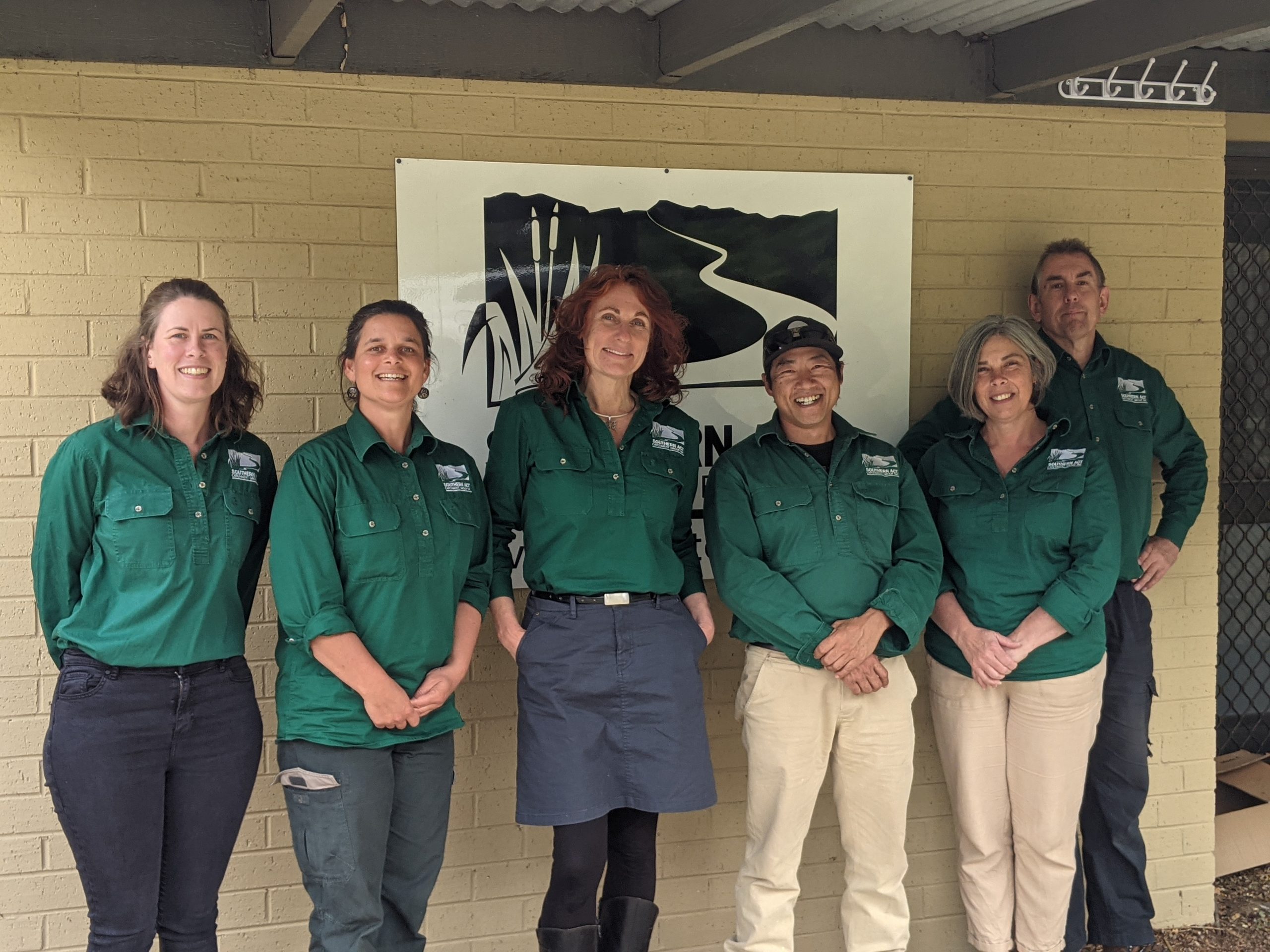
EXECUTIVE OFFICER | Martine Franco
Martine has been with SACTCG since 2012 and came to the roll from working as a Conservation Planner in the ACT Government. She has an educational background in forestry and had a previous career as an Occupational Therapist in Community Mental Health. Martine loves the bush and has a passion for empowering the community to improve the resilience of local environments.
Phone: (02) 6296 6400
Mobile: 0447223396
Email: info@sactcg.org.au
Monday-Thursday
WATERWATCH COORDINATOR | Martin Lind
Phone: (02) 6296 6400
Mobile: 0447 870 448
Email: waterwatch@sactcg.org.au
Tuesday-Friday
PROJECT OFFICER | Fiona Spier
Phone: (02) 6296 6400
Email: projects@sactcg.org.au
Monday-Wednesday
URBAN WATER EDUCATION and PROJECT OFFICER | Hannah Edwards
Hannah joined SACTCG as the Urban Water Education Officer in 2019. With a degree in Environmental Engineering and a passion for sustainability education, she is committed to making everyone care about water as much as she does.
Email: urbanwater@sactcg.org.au
Monday-Wednesday
BUSHFIRE RECOVERY PROJECT OFFICER | Jeff Eichler
Jeff joined SACTCG as the Bushfire Recovery Project Officer in 2021. With an education in conservation and a background in reserve management, he holds a deep love for our native bushland and the connection that we all share with it.
Email: ruralprojects@sactcg.org.au
Monday-Wednesday
ECOLOGIST and PROJECT OFFICER | Zohara Lucas
Zohara just loves being in nature! She has a strong background in working with communities, grassland monitoring, weed identification, assessing ecosystem health, environmental education and generally being inspired by and surrounding herself with people who care for the land.
You might find her in amongst the grasses identifying a wild flower, pulling out a weed or chasing a butterfly!
Email: ecologist@sactcg.org.au
Monday-Wednesday
COMMUNICATIONS OFFICER | Joseph Johnstone
Joseph loves sharing the knowledge and skills he has gained from volunteering and studying conservation at CIT to communicate the importance of connecting with nature. He is deeply passionate about conservation and dedicated to inspiring others to join the cause. Joseph is easily captivated by flowers, and sometimes needs gentle guidance away from parks and nature reserves when the day draws to an end.
Email: communications@sactcg.org.au
Monday-Tuesday
SACTCG Strategic Plan on a Page 2019
SACTCG Strategic Plan 2011-2013

Download the SACTCG Strategic Plan 2011-2013
Catchment Management Strategy 2007-2010
 Purpose Sub-Catchment Planning is a method for community groups to participate in Integrated Catchment Management (ICM) for the ACT. ICM aims to foster cooperation between landholders, community groups and the ACT Government in the integrated management of our shared resources. The Southern ACT Catchment Group has undergone a review of its plans to bring them up to date with existing management strategies for the region and to develop new projects for implementation in the future.
Purpose Sub-Catchment Planning is a method for community groups to participate in Integrated Catchment Management (ICM) for the ACT. ICM aims to foster cooperation between landholders, community groups and the ACT Government in the integrated management of our shared resources. The Southern ACT Catchment Group has undergone a review of its plans to bring them up to date with existing management strategies for the region and to develop new projects for implementation in the future.
The Southern ACT Catchment Group Catchment Management Strategy can be downloaded in pdf format below. If you would like to obtain a hard copy, please contact SACTCG.
Contents
- Forward & Layout of the Strategy
- Catchment Management Strategy
- Catchment Management in the Southern ACT
- About our Catchment – Part 1
- About our Catchment – Part 2
- About our Catchment – JPEG of SACTCG Boundary Map
- About our Catchment – Part 3
- State of our Catchment
- Planning and Legislation Framework
- Interpreting the Strategy
- Management Categories – Part 1
- Management Categories – Part 2
- Evaluation of the CMS
- References
Existing Management Strategies
Further ICM Related Links
The ACT Catchment Groups Value Proposition details the value of three Catchment Groups: Ginninderra Catchment Group, Southern ACT Catchment Group and Molongolo Conservation Group.
SACTCG PRIVACY POLICY
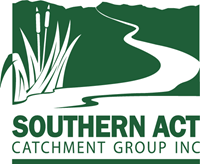 The Southern ACT Catchment Group has created this online privacy statement to demonstrate its commitment to protecting your personal privacy.
The Southern ACT Catchment Group has created this online privacy statement to demonstrate its commitment to protecting your personal privacy.
In this Privacy Policy, ‘us’, ‘we’ or ‘our’ means Southern ACT Catchment Group (ABN 45 145 814 521). We are committed to respecting your privacy and are bound by the Australian Privacy Principles (‘APPs’) in the Privacy Act 1988 (Cth) (the ‘Privacy Act’). This Privacy Policy sets out how we collect, use, store and disclose your personal information and how you can contact us for more information (our contact details are below).
Information collected by the web site
When you browse this web site, our system automatically makes a record of your visit and logs the following information for statistical purposes:
- top level domain name (e.g.: .com, .net, .gov, .au, etc);
- the type of browser and operating system you used;
- date and time of your visit;
- which pages are accessed;
- the time spent on individual pages and the site overall;
- which files were downloaded.
This information is analysed to determine this web site’s usage statistics.
However, no attempt will be made to identify individual users or their browsing activities except, in the event of an investigation, where a law enforcement agency exercises a warrant to inspect our service provider’s log files.
Your own browser may also collect other information such as:
- the previous site visited;
- your server address
To further protect your privacy, it is possible to use an appropriate browser or disable tracking in your browser.
Personal Information
Personal information may include
- Your name;
- your email address, mailing address, phone number and other contact details;
- your age or date of birth;
- information about your involvement or donations to us;
- any additional information you provide to us directly.
We do not collect personal information about you unless you voluntarily choose to participate in an activity with us that involves the provision of personal information, such as:
- participating in a survey or filling out a form from SACTCG
- sending electronic mail to this web site;
- undertaking a payment or other transaction through this web site or our Raisely website
- Suggesting a link from this web site to an external web site
Use of personal information collected
Any personal information you choose to provide will only be used for the purpose for which it was provided and will not be disclosed to other persons or organisations without your prior consent; if required by law; or otherwise stated on a project-by-project basis.
How we secure your data
We may hold your personal information in either electronic or hard copy form. We take reasonable steps to protect your personal information from misuse, interference and loss, as well as unauthorised access, modification or disclosure and we use a number of physical, administrative, and technical measures to protect your personal information. In the event of a data breach, we will notify you and the relevant authorities as required by law.
Third Party Websites
Information submitted unencrypted via electronic mail or web forms may be at risk of being intercepted, read or modified. This site contains links to external web sites and this privacy statement does not extend to external web sites. The Southern ACT Catchment Group is not responsible for the privacy practices or the content of external web sites.
Changes to this Privacy Policy
We reserve the right to make change to this Privacy Policy by publishing changes to it on our website. We encourage you to check our website periodically to ensure that you are aware of our current privacy policy.
Contact Us
For further information about our Privacy Policy or practices, or to access or correct your personal information, or make a complaint, please contact us using the details set out below.
info@satcg.org.au
(02) 6296 6400
Erindale Business Park, Building C8, 2 Lansell Circuit, Wanniassa, ACT 2903
